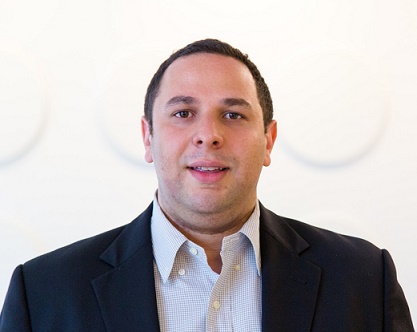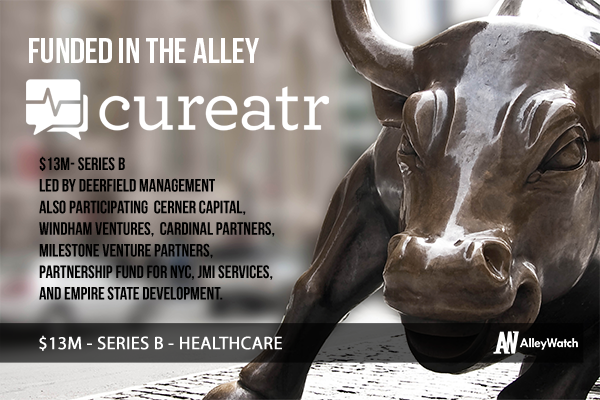Do you know how to make all your healthcare information available to your providers? Until Cureatr, there was a large degree of fragmentation and both patients and providers spent far too much time tracking down the necessary information needed for treatment. The newly-funded startup harnesses technology for care coordination by providing doctors and healthcare providers real time information about their patients. This save the industry not only time but also money.
Today, we sat down with Dr. Joe Mayer, cofounder and CEO, to discuss the company, the recent funding, and the future of healthcare.
Tell us about your product or service.
Cureatr eliminates barriers to communication that healthcare providers face when coordinating care for patients. Our mission is to connect everyone for better healthcare through Care Transition Notifications™ (CTNs), which provide real-time push notifications to alert providers when their patients are treated in any care setting within their region. This enhances the ability for clinicians to intervene, simplifies team coordination and streamlines workflows. As healthcare providers assume greater risk and responsibility for their patients, seamless communication, notifications and workflows are critical not just for healthcare providers’ efficiency, but for the overall health of the communities they serve.
What inspired you to start the company?
As a medical student at Columbia, I focused on clinical operational workflow research and I founded Cureatr during my residency at Mt. Sinai when I saw first-hand the frustration around communication among care providers in regional networks. I was working in the ER and found it frustrating that we had to spend hours trying to track down a patient’s primary care physician. I knew that I could help care providers overcome this communication obstacle to save time, money and resources across all health enterprises. My goal was to make it easier for doctors, nurses and all healthcare providers to know when and where their patients were in a clinical setting and what care they were receiving.
When starting the company, I decided to use the name Cureatr for a few reasons. It has the word “cure” in it and also implies what we are doing – curating data and info for care teams in a healthcare setting. Curation is basically what a care-team does for its patient.

How is it different?
We are the only health tech platform focusing on building regional networks to deliver real-time clinical event notifications, which we call Care Transition Notifications™. Our real-time alerts give care providers the necessary and life-critical information whenever a patient has a care event, like dialysis, a yearly physical or emergency care, within a region. We are bringing historically fragmented and disparate care providers together to truly act as a team.
What market you are targeting and how big is it?
Our emphasis is on building new regional networks of CTNs. New York State is by far the market with the greatest traction. We can deliver CTNs to 100% of the five NYC boroughs, southern Long Island and southern Westchester. We are working with all the health information exchanges around the state to aggregate ADT feeds and serve up CTNs statewide. We are also building new networks in the South, Southwest and Midwest. Our goal is to be nationwide. A particular strength of ours is empowering new accountable care organizations set up through the ACA to keep track of their patients.
What’s your business model?
We provide a mission-critical service to healthcare providers, payers and at-risk organizations that reduces preventable readmissions and decreases avoidable hospitalizations. Our pricing is based on the number of patients, number of users and the particular services a provider uses.
Who were your investors and how much did you raise?
Our recent Series B funding announcement was for $13M. This round of funding was led by Deerfield Management, a healthcare technology private-equity firm in New York. Deerfield is joined by Cerner Capital, Inc., Windham Ventures, a strategic health IT investor, and previous investors Cardinal Partners, Milestone Venture Partners, Partnership Fund for New York City, JMI Services, LLC, and Empire State Development.
We are using the funds to launch new regions for Cureatr’s Care Transition Notification™ networks and to continue to build partnerships and expand our market opening and technology teams.
What factors about your business led your investors to write the check?
More and more health providers are transitioning from traditional fee-for-service arrangements to value-based delivery and payment systems. This means these providers assume greater responsibility for overall health outcomes of the populations they serve. Accordingly, they need to know when patients are being treated in their region, streamline workflows and enable greater communication.
Investors familiar with the current healthcare landscape know there is a huge market of opportunity for tech companies that deliver mission-critical services like we do.
Where do you see the company going now over the near term?
Earlier this year, we announced DaVita HealthCare Partners would be implementing Cureatr throughout their entire enterprise. An organization of their size and scale presents huge opportunities for Cureatr to deliver innovative solutions. Within the next six months, we plan on being able to announce at least two major partnerships and several important pilot projects that are currently being negotiated. These efforts will support our expansion into new geographies and customer segments.
From a talent perspective, we just recently appointed Bill Winkenwerder, MD, to our board. He will be instrumental in opening up conversations with payers and at-risk entities. Last year we hired Mary Stuyvesant as vice president of client services who came to us from a competitor and brings best-in-class customer service and implementation leadership. Additionally, we attracted three former executives from the Indiana Health Information Exchange, including vice president Kent Hiller, to lead our partnership and strategic alignments with HIEs and RHIOs.
What advice can you offer companies in New York that do not have a fresh injection of capital in the bank?
Focus on what you do best and repeat that over and over. Acquire smart, trusted advisors. Don’t be afraid to work your network. Those who know you best are the most likely to support you early on.
Maybe it’s because of my residency that I am used to working long hours and sleeping when I can that we have a comfy couch in our office for rest during those long-hauls. I recommend getting one, too, and don’t be afraid to sleep on it when you’re slogging through that beginning stretch.
What’s your favorite NY bar, when you need to kick back and relax?
It might be the doctor in me, but I’m more of a coffee person. With all the new artisanal small-business cafés opening, I am basically doing a coffee-crawl around NYC. An excellent cup not only fuels my day but also is how I enjoying taking a break from running a busy start-up. La Colombe at 319 Church is probably where I go most often. It’s close to the office and the coffee is excellent.





